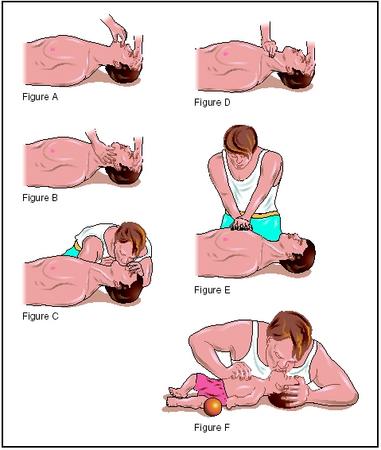CPR (Cardiopulmonary
resuscitation)
CPR, also known as Cardiopulmonary resuscitation, is a
technique performed on a person who isn’t circulating blood or is no longer
breathing. A person can suffer brain damage or even death without oxygen. The
purpose of performing CPR is to deliver a flow of oxygenated blood to the
brain. However, this technique is only a temporarily procedure to keep blood
flowing to the brain.
CPR may perhaps be necessary in many different emergencies
and using the appropriate method will give someone a possibility of survival. Nonetheless,
it should only be performed only when a person isn't
breathing or circulating blood. Once you have determined whether or not a
person needs assistance, evaluate the person’s responses and be aware of things
such as eye opening, sounds from the mouth, chest movement, or other signs of
life such as movement of the arms and legs. In infants, rubbing the chest over
the breastbone can help to determine any aspect of responsiveness. Always
remember to call for emergency assistance whenever CPR is needed.
The three components
of CPR are: compressions, airway, and breathing. The main part in performing
CPR is chest compressions, which helps to restore the flow of blood to the
heart, brain, and other organs, by pressing down firmly and quickly on the
center of a person’s chest. After
completing the procedure of thirty chest compressions, validate whether if the
person’s airway is open and supply air to the person’s lungs by using the
method of mouth-to-mouth resuscitation. Repeating the process of thirty chest compressions followed by two breaths rapidly can sometimes rescue a person's life. When performing rescue breathing to a
victim, always check for signs of life.


No comments:
Post a Comment